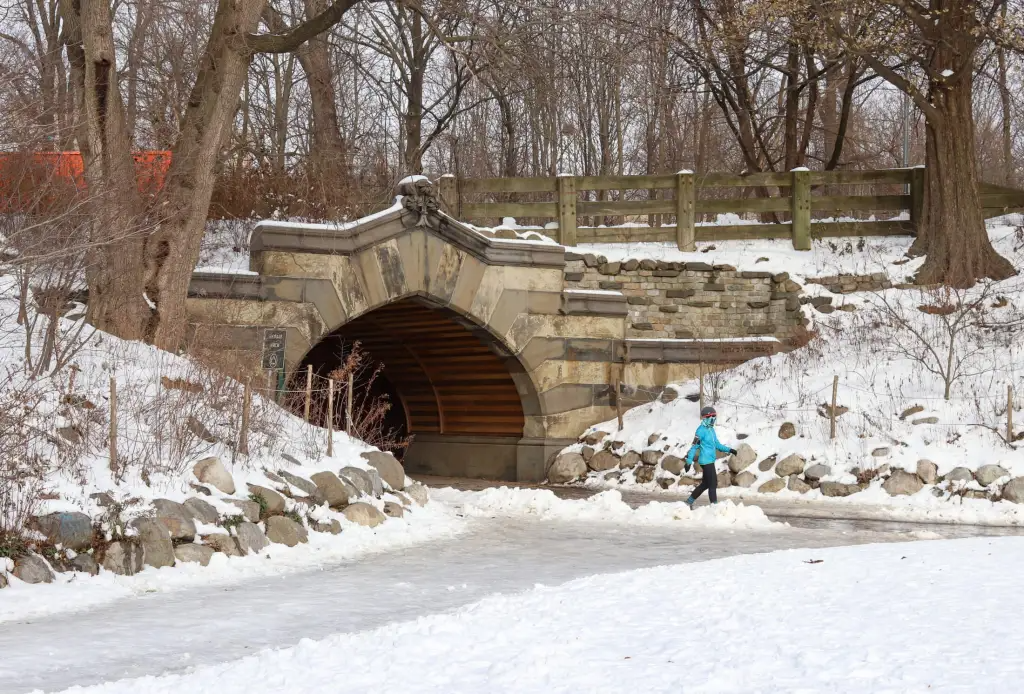LPC's Historical Context for Calendaring Domino
In reporting the news that the Landmarks Preservation Commission had unanimously voted to calendar the historic brick portion of the Domino Sugar Factory on the Williamsburg waterfront, NY Times blog Empire Zone provided the LPC’s written rationale below (and continued on the jump): Sugar production was Brooklyn’s most important industry in the 19th and early…


In reporting the news that the Landmarks Preservation Commission had unanimously voted to calendar the historic brick portion of the Domino Sugar Factory on the Williamsburg waterfront, NY Times blog Empire Zone provided the LPC’s written rationale below (and continued on the jump):
Sugar production was Brooklyn’s most important industry in the 19th and early 20th century. Large factories lined the East River waterfront, particularly in Williamsburg, where the largest group was concentrated. Among these plants, the former Domino sugar refinery, located immediately north of the Williamsburg Bridge, is the largest and most significant to survive. Three connected structures, bordering Kent Avenue, between South 2nd and South 3rd Streets, are proposed for designation: the Filter House, the Pan House and the Finishing House.
The largest structure is the Filter House. Thirteen stories tall, it faces the East River and measures 250 by 80 feet. It was here that raw sugar entered the processing plant and mixed with charcoal, acid and water. Once all foreign materials were removed, the liquid sugar entered the Pan House, a nine-story structure at the southwest corner of Kent Avenue and South 2nd Street. Here, the liquid sugar was reduced to syrup and pumped to the Finishing House, where it was dried and graded for sale.
Frederick C. Havemeyer Jr., son of the company’s founder, began operating a refinery in Williamsburg in 1856. Located beside the waterfront, the Havemeyer & Elder Sugar Refinery prospered and grew. A fire, however, destroyed much of the plant in January 1882. Under Theodore Havemeyer, a new facility was built, the largest in the nation. The plant’s enormous capacity allowed the Havemeyers to control the American market, leading to the creation of the Sugar Refineries Company in 1887, later known as the American Sugar Refining Company. Though the plant’s architect has not been identified, it seems likely that these buildings were planned or designed by the company’s chief engineer, John van Vorst Booraem, who joined the firm in the same year as the fire.
Like most industrial buildings constructed in New York City during the late 19th century, it was designed in the Rundbogenstil or round-arch style, a variant of the Romanesque Revival style. Rooted in practical needs, the monumental brick facades have rows of round-arched windows that reduce the need for artificial light. The street facades display simple details, including brick piers and corbelling. A large oval smokestack dominates the west façade of the Filter House. Though the base is original, the section that rises above the roof was added following a major expansion of the refinery during the 1920s.
Despite these and other changes, the 1882-84 processing plant remained the heart of the complex, clearly visible from Brooklyn and Manhattan. In the 1970s, Domino ceased refining sugar at this location and these three buildings became vacant. The plant closed in 2004 and the site was acquired by the Community Preservation Corporation, which plans to convert the complex to residential use.
Brooklyn’s Sweetest Landmark? [NY Times]
Domino Calendared! [Waterfront Preservation Alliance]
Domino Sugar Factory To Be Considered by LPC [Brownstoner]
Photo by goggla





Dear Annabee, while I agree that the building is not beautiful, there are other reasons to landmark it. The landmarks law allows a building to be designated based on its special historic, cultural, or aesthetic merits.
Note that aesthetics is last.
This building is a tangible connection to Brooklyn’s role as an industrial powerhouse and the role of its waterfront as a place of commerce, business, and most of all manufacturing, before it became a residential area. In addition, it is an interesting and solid building that I think will add something, in its new role, to the changing skyline. For those reasons I think the landmarks panel is correct to designate it and in so doing protect it from demolition.
I suspect anon 11.41 is the real racist.
LPC is only looking to landmark one of the Domino buildings which would not hinder the development of affordable housing. The racist Williamsburg not for profits want to landmark the other buildings also, which are not compatible with easy residential conversion. This is the sneaky tactic that these racists are using to limit the percentage of affordable housing. The affordable housing group “Churches United” are also against this landmarking tactic. The developer’s original plan was for 50% affordable housing. Now with the landmarking tactic, they say they would only be able to do 20% affordable. Don’t support the racist Williamsburg not for profits.
I always thought that building was really really ugly. Why would anyone want to see that landmarked? What is so wonderful about this structure? Its a box with arched windows, or am i missing something ‘important’ b/c i never studied architecture in school.
As for nostalgiac reasons to landmark, i doubt there are any. My father worked in that factory in the sixties and he had nothing nice to say about the place. He said the only perk to working there was lunch at lugers!!
By the way, for fokks interested in architectural history, the building’s style is pronounced “rund bogin shteel”.
A very nice term to know. Nicer than neo-romanesque.
New York’s Tate Modern lives! Lets see if New York can do this right.
New York’s Tate Modern lives! Lets see if New York can do this right.
they can burn it! gutman style!
They realy cannot tear it down once it has been calendered for landmarking.
And something like this would take weeks if not months to demolish. Of course an accidental fire is another story.
The Havermayers are sill around. Still rich from all that Cuban sugar money from long ago.